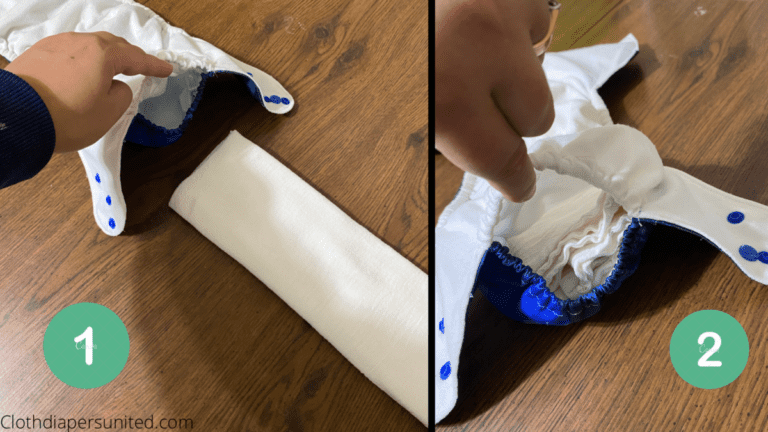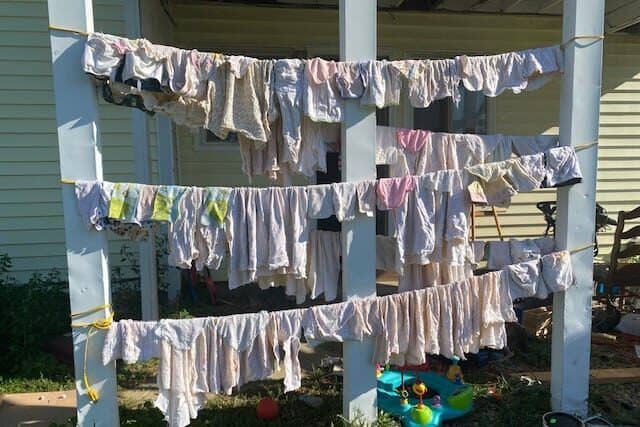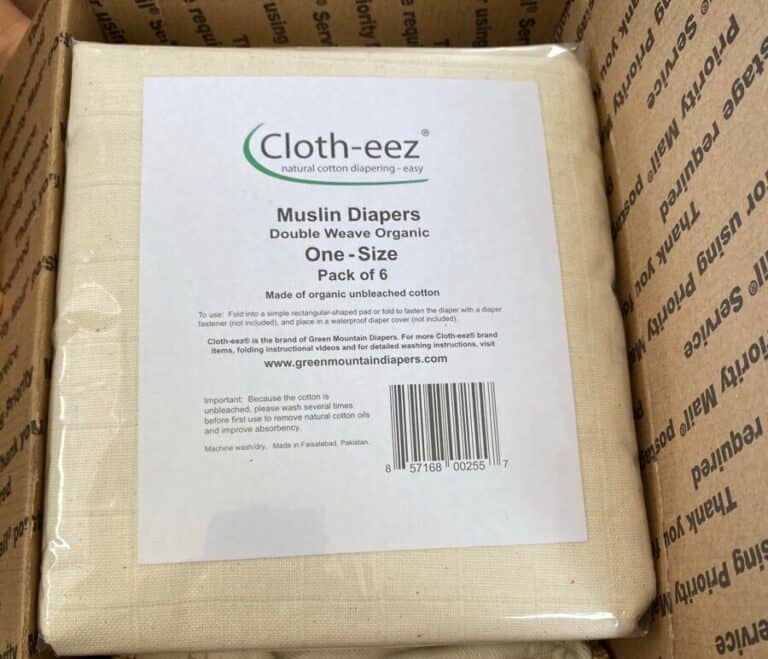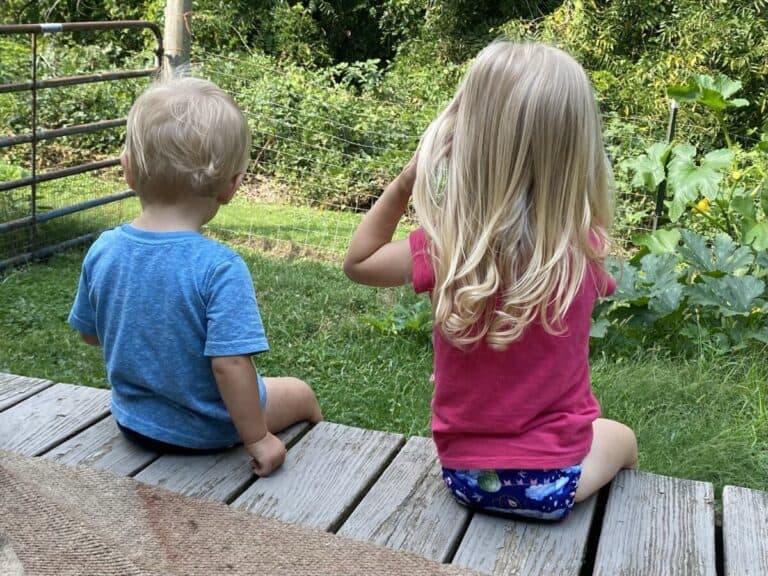All-in-one cloth diapers: Personal experience & Pics

All-in-one cloth diapers are cloth diapers that have the absorbent layer (insert) and the water-resistant layer (cover) sewn together, this makes them faster to prep after washing but makes them more expensive then other styles of cloth diapers
How to care for all-in-one cloth diapers
In general all cloth diapers are pretty easy to care for, and while all-in-ones are considered the most convenient to use, they are probably the hardest to wash.
This does not mean that they are hard to wash, they are just slightly harder to wash than other styles of cloth diapers.
All-in-ones are said to be easier to deal with because all the parts are sewn together, however when you have several layers of fabric sewn together it’s going to be harder to wash than a single layer of fabric.
The very thing people love so much about all-in-ones just happens to be the reason they are harder to wash.
Washing all-in-one cloth diapers
When washing all-in-ones you’re going to want to make sure that you are using enough detergent.
Also make sure that the cycles you are using on you’re washing machine are long enough to give the detergent time to work in and out of the diapers.
This is especially important with all-in-ones since there are multiple layers of fabric sewn together that the detergent must work through.
Drying all-in-one cloth diapers
For me, the time it takes to dry all-in-ones has always been their biggest con.
Whether you are using a dryer or line drying your all-in-ones, they are going to take longer than most other cloth diapers to dry.
Keep in mind that you will void the warranty on some cloth diapers brands by putting them in the dryer.
If you want to learn more about washing cloth diapers check out my article ” How to wash cloth diapers: Tips from a cloth diaper laundry veteran”
Do all-in-one cloth diapers need inserts?
Yes, all-in-one cloth diapers do need inserts.
However, the most attractive feature of all-in-one cloth diapers is that they are “all in one” or “all together” which means that all the parts you need for the diaper to function are all sewn together and ready to go!
Some all-in-ones do come with extra inserts you can add if your baby needs more absorbency than the sewn-in insert/inserts can provide alone.
If you want to learn more about cloth diaper inserts and their materials check out my article ” Cloth diaper inserts: What are they & which are best?”
Natural fiber VS Microfiber all-in-ones
Natural fiber cloth diapers tend to be more absorbent and easier to clean, but they are usually more expensive.
Microfiber (synthetic) cloth diapers tend to be cheaper than natural fiber cloth diapers, but they are harder to wash and are not as absorbent.
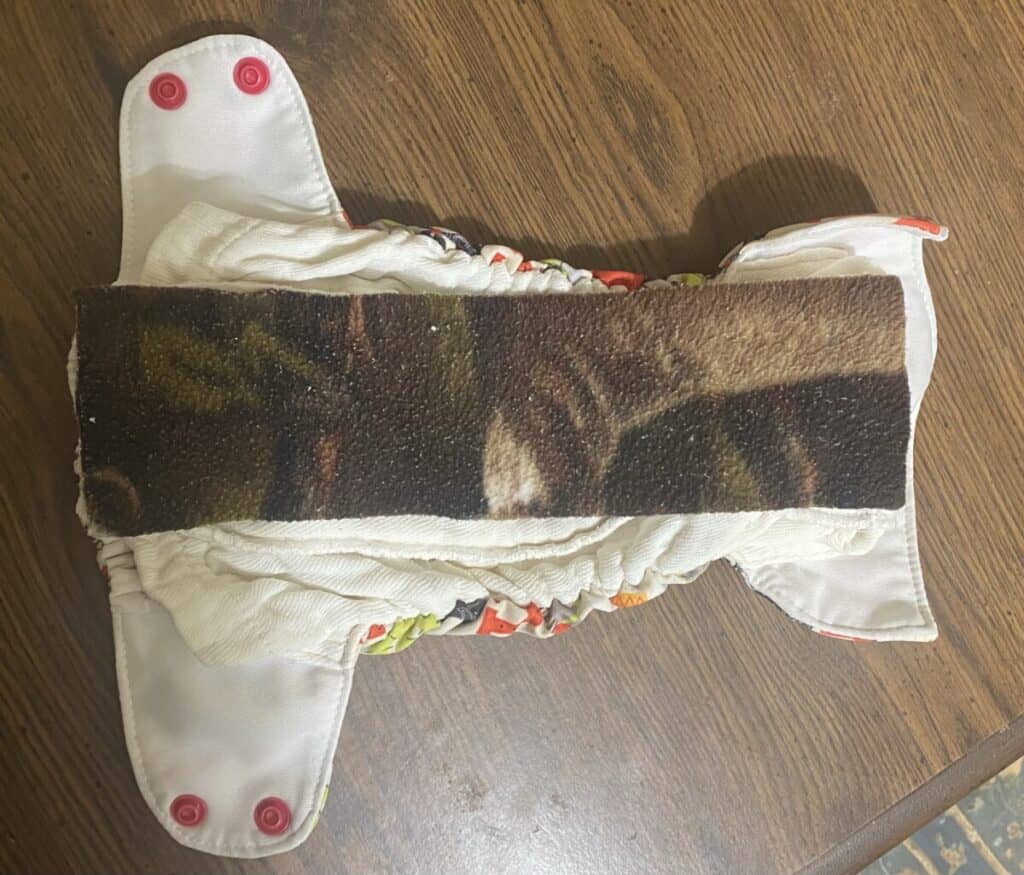
Natural fiber cloth diapers
Natural fiber cloth diapers are usually made from cotton, hemp or bamboo (there is some debate on whether bamboo is actually a natural fiber).
Many people prefer natural fibers because they can go directly against the skin, they don’t hold stink like synthetics and natural fibers are usually more environmentally friendly.
A con with using natural fibers is that they get edge-wear and eventually the diaper becomes very ratty looking, unusable or barely usable.

How soon you start to get edge-wear varies depending on what material the fabric is made of ( e.g. cotton, hemp, bamboo) what type of fabric it is (e.g. flannel , jersey, fleece) and how the diaper is sewn together.
You will see edge-wear sooner if you
- Have a small stash
- Use bleach
- Strip your cloth diapers frequently
- Put your cloth diapers through the dryer
Microfiber (synthetic) cloth diapers
Microfiber is a very quick absorbing fabric that is made from polyester.
Many people like microfiber because it is fast absorbing and relatively cheap, however microfiber is not as absorbent as natural fibers so it typically isn’t the best option for older toddlers.
Microfiber also looses it’s absorbency overtime since little by little it sheds the microplastics it’s made of, meaning there is less and less material to absorb.

Finally microfiber cannot go directly against baby’s skin, microfiber is so good at drawing moisture that it will dry out baby’s skin and cause irritation and rashes, microfiber must have a layer of skin safe fabric between microfiber and baby.
Are all-in-one cloth diapers expensive?
All-in-one cloth diapers are more expensive than most other styles of cloth diaper.
All-in-ones take more time and material to make, and are seen as the most convenient cloth diapering option, therefore they come with a higher price tag.
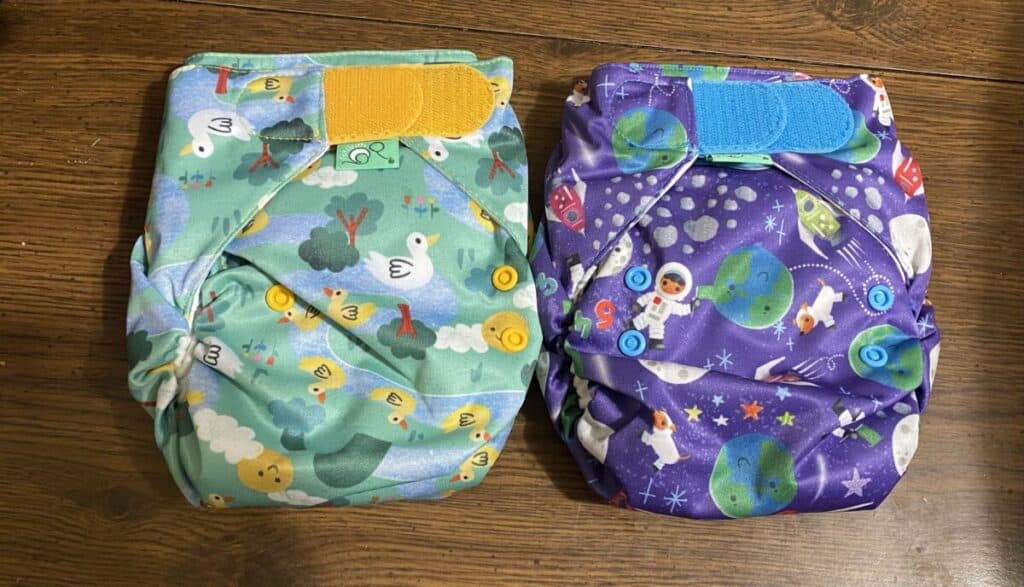
Most natural fiber all-in-ones cost around $30.00 and synthetic all-in-ones cost around $25.00.
That means a stash of 30 natural fiber all-in-ones would cost you about $900.00 and 30 synthetic all-in-ones would cost $750.00.
Average cost for disposable diapers from birth to potty-training is $2,660, that number doesn’t include taxes, wipes or any additional trash services you may need to remove the extra trash.
Resources
Some of the links below are affiliate links, meaning I receive a small commission (at no additional cost to you) from qualifying purchases made through those links. * Indicates an affiliate link
Smartbottoms 3.1 all-in-one at smartbottoms.com
Blueberry newborn simplex at blueberry.com
Thirsties newborn natural all-in-one at clothdiaper.com*
Totsbots Easyfit at greendiaperstore.com



